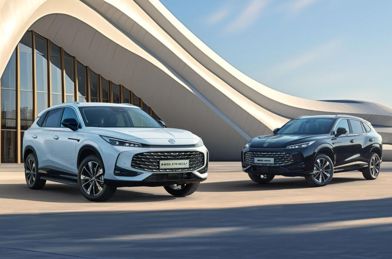We’ve been talking a lot about Ford’s Puma compact SUV this week. But two-and-a-bit decades ago everybody was talking about a different Ford Puma.
The late-1990s were the golden era of fun-to-drive small cars from Ford of Europe. Like its 2020 namesake, the 1997 Puma was based on the Fiesta hatchback, but reimagined as a coupe-style three-door. Manual transmission only of course.
The Puma was a critical hit right from the start. For a niche model the range was extensive, starting with a 67kW 1.4l model, stepping up to a 76kW 1.6l and featuring a hero version with a 1.7l Variable Camshaft Timing (VCT) engine that was exclusive to Puma. It made 92kW – exactly the same as the 1.0l in the new Puma compact SUV.
The 1.7l was a co-development with Yamaha – the engine block was manufactured in Spain, shipped to Japan for completion and then sent back to Germany, where the car was built. “Carbon footprint” was not a thing in the 1990s.
It was a genuinely sporty machine: it weighed just over a tonne and had thoroughly reworked steering and chassis components. And an aluminium gearknob!
The ultimate model was the limited-run “Ford Racing Puma”, with an extra 22kW, wider tracks, uprated brakes and a special interior including Sparco seats. It was built by Tickford in the UK.
The FRP was generally thought to be awesome but also universally agreed to be scary-expensive: the price at the time was substantially more than the likes of a top-specification Subaru Impreza WRX STI. The initial run of 1000 was trimmed back to 500 and many first owners were Ford managers.
And that’s why it was great to work for Ford in the 1990s.
Biden's Beast
One luxury Cadillac, two careful owners: soon to be the official transport of US President Elect Joe Biden, the current presidential limousine can trace its roots back to 2009, when it was known as “Cadillac One”. It was first used on January 20 2009, to carry Barack Obama to his inaugural parade.
At the time it was called “the most technologically advanced protection vehicle in the world”.
Cadillac One evolved into 2018’s “The Beast” under Donald Trump’s presidency – although that name is also applied retrospectively to the earlier car, because both are closely related.
The Beast has Kevlar-lined tyres, a foam-sealed fuel tank, state-of-the-art communications systems and a secure blood and oxygen supply for the President.
Don’t be fooled by the car-like styling – The Beast is actually based on a truck chassis and weighs around nine tonnes. Which is why it can’t do much more than 100km/h.
So President Elect Biden, these are your new wheels. You just have to get the keys from the outgoing bloke.





